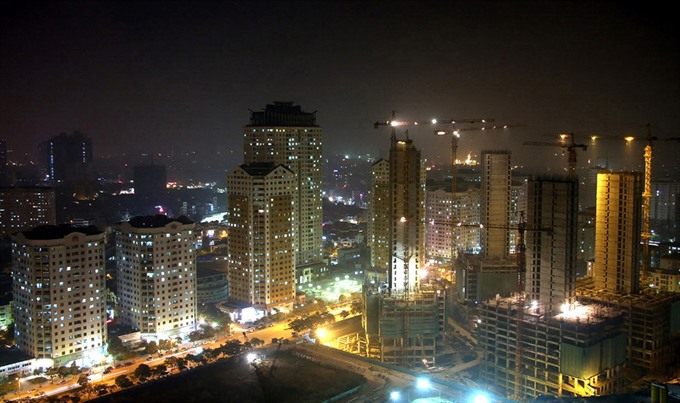 Society
Society

Irrationalities in urban planning and management have led to an overly dense urban population and an overloaded transport infrastructure in the capital city of Hà Nội.
 |
| An snapshot of Trung Hòa – Nhân Chính urban area in Hà Nội’s Thanh Xuân District. Irrationalities in urban planning and management have led to an overly dense urban population and an overloaded transport infrastructure. — VNA/VNS Photo Tuấn Anh |
HÀ NỘI — Irrationalities in urban planning and management have led to an overly dense urban population and an overloaded transport infrastructure in the capital city of Hà Nội, affecting the lives of local residents.
More than ten years ago, an apartment in the Linh Đàm urban area was the dream of many middle and low-income families in the capital. But now, it has been degrading and disappointing.
Bùi Quang Đông, who lives in the HH4C Apartment Building, said he borrowed money from his friends and relatives to buy an apartment here with the hope that his family would enjoy a good atmosphere and service. However, it didn’t meet his expectations.
The thing that made him dissatisfied the most was that he had to wait for the elevator for such a long time – up to half an hour at peak times, he said.
Lines of people tired of waiting, and overcrowding in front of elevators had been everyday reality for local residents.
Every morning, between 7 and 7.30pm, people rush to their offices and schools, as a result, congestion at the elevator occurs regularly.
To cope with the situation, people sought alternative ways.
Đông had to change his timetable for work and return home earlier than usual to avoid getting stuck, while Nguyễn Thị Thuận, another local resident, never got into elevators in rush hours.
“Due to my old age, I can’t stand being surrounded by crowds of people. It makes me feel dizzy”, she told Lao động (Labour) newspaper.
However, not everybody can be as flexible as Đông and Thuận, most of the local residents had to go out and back home at peak hours.
“Sometimes I am irritated by waiting for the elevator as the time for going from the ground floor to my house is longer than that from my office,” said Lê Huyền Trang, who resides in HH1C apartment building.
The above-mentioned outstanding issues don’t only exist in Linh Đàm urban area, but also in other urban areas such as Kim Văn-Kim Lũ and Đại Thanh.
For Nguyễn Thị Hà, a resident from Kim Văn-Kim Lũ urban area, waiting for her turn to use elevators recalled her of the past - the subsidy period. During the period, food and goods were purchased with coupons or food stamps issues by the government. As goods were very rare, people had to queue for a long time to buy them.
The overloading parking lot has hindered residents’ living as well.
Phạm Minh Đức, another resident, wanted to buy a car so he could take his children to school every day without worrying about the weather. But the parking shortage has deterred him from doing so.
As the developers tried to heighten their buildings for profit by accommodating more residents, they neglected other factors, such as transport infrastructure or public utilities to serve residents, he explained.
Lê Văn Huy, who lives in the CT10A Apartment Building in Đại Thanh urban area, said although the building had five elevators, local residents often had to wait for their turn for up to 15 minutes during rush hour.
He attributed it to the fact that the elevators were always full and sometimes out of order due to overloading.
The parking lot and traffic congestion were also problems for residents in the building.
“The underground parking area is small compared with the number of residents living here. It takes me a lot of time to take my motorbike out of the parking lot and due to the traffic I am usually late for work,” Nguyễn Minh Huyền, another resident, told Việt Nam News.
She spent at least half an hour travelling to her office, which is only 4 kilometres away from her house.
According to Huyền, there are 6 adjacent apartment buildings within 400 metres of National Highway 70. Each building has 32 storeys and each floor has 22 apartments. On average each household has three persons, so there will be around 2,000 people in each building.
In addition, adjacent to Đại Thanh urban area is the Xa La urban area with many thousands of people living in similar conditions. With such a number of the population rushing to the street at peak hours, traffic on the road was a nightmare, she said.
After residing in the area for 2 years, her family has decided to move to another place, Huyền said.“I’m tired and I don’t know what to do. I don’t want to live in such an overcrowded building. However, it was not easy to sell the apartment.” — VNS




